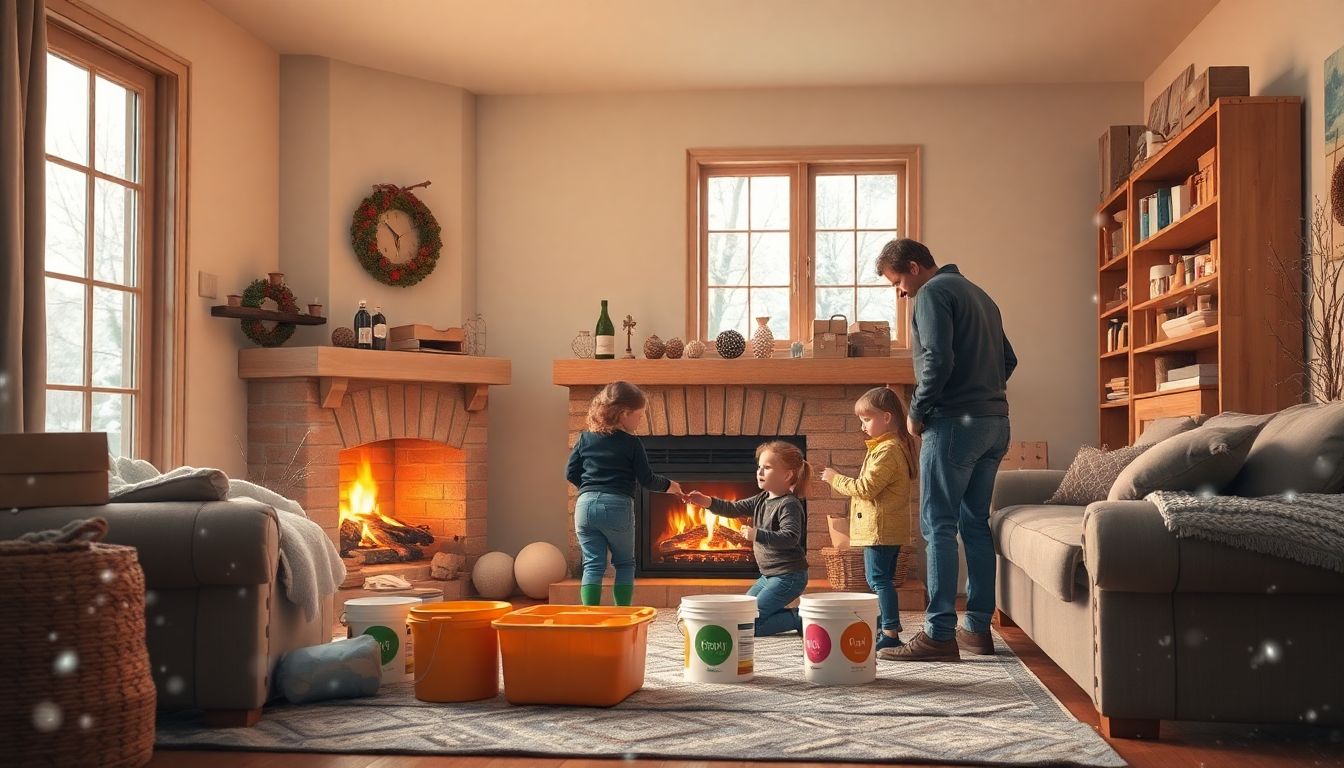
How to Prepare Your Home for Winter Storms: A Winter Storm Warning Survival Guide
Winter storms can cause significant damage. In fact, according to the National Weather Service, winter storms are responsible for around 1.3 billion dollars in annual damages. Preparing your home ahead of time is critical for minimizing risks associated with severe weather.
Winter storms can bring strong winds, heavy snow, ice, and freezing temperatures. These conditions can lead to accidents, property damage, power outages, and health risks like hypothermia or carbon monoxide poisoning. Knowing how to prepare can save lives and reduce damage.
This guide outlines how to secure your home's exterior, ensure indoor safety, prepare your utilities, and act during a winter storm. By following these key areas of focus, you'll be better equipped to face winter's worst.
Securing Your Home's Exterior
Protecting Your Roof and Gutters
- Clear Debris: Remove leaves and debris from gutters and roofs. Clogged gutters can cause ice dams, leading to roof leaks.
- Reinforce Vulnerabilities: Inspect your roof for weak spots and reinforce them. If roof work seems risky, hire a professional.
- Data Point: Nearly 30% of winter storm damage is linked to roofing issues (National Weather Service).
Preparing Your Windows and Doors
- Weatherproofing: Use caulking and weather stripping to seal drafts around windows and doors effectively.
- Secure Loose Items: Bring indoors any loose outdoor furniture or decorations that could become projectiles in strong winds.
- Real-World Example: A family experienced severe window damage when a gust of wind shattered their unprotected windows during a winter storm.
Protecting Your Landscaping
- Secure or Remove Objects: Tie down or bring in items like patio furniture, holiday decorations, and garbage cans.
- Protect Plants: Cover delicate plants or bring them inside to safeguard against frost and strong winds.
- Expert Quote: “Protecting your landscape is as important as securing your home,” says a landscape architect. “Invest in quality coverings.”
Ensuring Indoor Safety and Comfort
Assembling an Emergency Kit
- Essential Supplies: Pack water, non-perishable food, medications, a first-aid kit, batteries, and a flashlight.
- Storage Tips: Keep the kit in a designated, easily accessible spot.
- Data Point: About 60% of households lack adequate emergency supplies (American Red Cross).
Maintaining a Safe Indoor Temperature
- Prevent Frozen Pipes: Let faucets drip dripping to keep pipes from freezing. Open cabinet doors to allow warm air circulation.
- Safety with Heaters: Use space heaters cautiously and keep them away from flammable items.
- Expert Quote: “To avoid frozen pipes, keep your home heated,” advises a local plumber.
Establishing Communication Plans
- Create a Communication Strategy: Ensure family members have a way to contact each other during power outages.
- Alternatives: Use text messages, social media, or walkie-talkies when phone services fail.
- Real-World Example: A family safely coordinated their locations and needs, preventing panic during a major storm.
Preparing Your Utilities and Systems
Protecting Against Power Outages
- Charge Devices: Keep electronic devices fully charged in advance of storms.
- Generator Safety: Only use generators in well-ventilated areas to avoid carbon monoxide poisoning.
- Expert Quote: “Safety is key when using generators,” says an electrician. “Follow all instructions carefully.”
Ensuring Heating System Functionality
- Schedule Inspections: Get your heating system checked before winter's onset to catch any issues early.
- Troubleshoot the Basics: Know how to troubleshoot minor heating issues, such as changing filters.
- Data Point: Approximately 15% of home heating systems fail during winter storms (U.S. Department of Energy).
Managing Water Supply
- Locate Shut-Off Valves: Know where your water shut-off valves are to quickly turn off the supply if pipes burst.
- Protect Pipes: Insulate vulnerable pipes to prevent freezing and bursting.
- Real-World Example: A homeowner faced extensive water damage after pipes froze. They learned to better insulate and check their systems.
Navigating the Storm: Actionable Steps During a Winter Storm
Monitoring Weather Reports and Warnings
- Stay Updated: Follow local forecasts and weather alerts via radio or smartphone apps.
- Understand Alerts: Familiarize yourself with the different levels of winter storm warnings to respond properly.
- Real-World Example: A family evacuated safely due to a timely weather service notification before a severe storm hit.
Staying Informed and Safe During the Storm
- Stay Indoors: Limit travel and seek shelter during hazardous conditions. If caught outside, find a safe place to stay until the storm passes.
- Hazard Advice: Always avoid walking on frozen surfaces if you can help it.
- Expert Quote: “Heed local advisories; safety is paramount,” advises an emergency management official.
Post-Storm Actions
- Assess Damage: Inspect your home and property for any damage after the storm subsides.
- Report Issues: Contact your insurance company and local authorities to report damage and receive support.
- Data Point: Studies show that 70% of homeowners encounter post-storm issues related to power or property damage (Insurance Information Institute).
Conclusion: Be Prepared, Stay Safe This Winter
Preparation is crucial for winter storms. By following these tips, you can secure your home and ensure your family’s safety. Get your emergency kit ready, reinforce your home, and have open lines of communication with loved ones.
Stay informed, share this information with others, and keep an eye on local weather forecasts. Being proactive can save lives and property as winter approaches.


